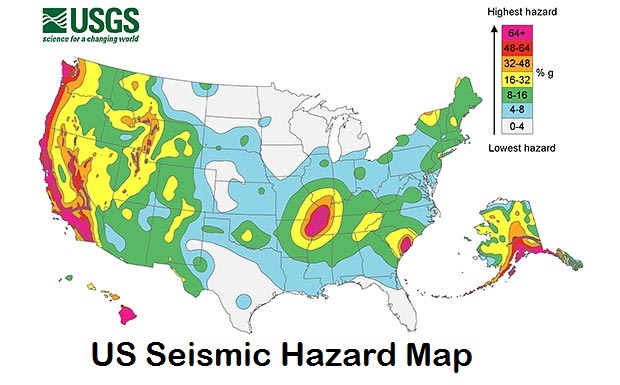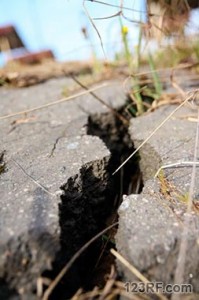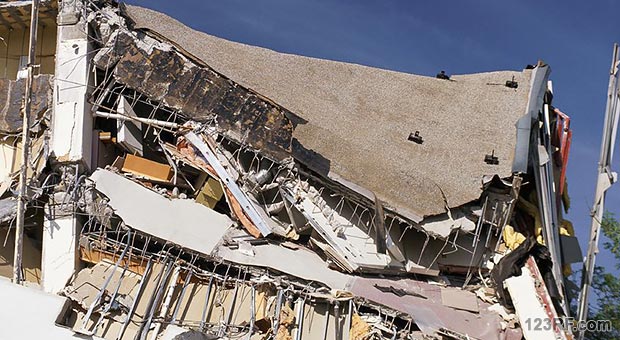If you remember the year 2011, one thing comes to mind almost instantly: the Fukushima disaster. In March of 2011, a huge earthquake followed by a catastrophic tsunami hit Japan. The earthquake was of a magnitude almost thought impossible before, but the Japanese society has a long history with earthquakes and their infrastructure is built to withstand almost anything imaginable.
What made the disaster way worse than it was supposed to be was the Tsunami that followed the earthquake. The huge wave caused by the quake wiped out the coastal areas of Japan and destroyed the Fukushima power plant. The Fukushima nuclear power plant disaster was one of the largest in history and still isn’t over, even after all these years.
Talking about preparing for the “big one”, it’s much easier to preach it than to practice it. Earthquakes are very hard, if not impossible to predict, which makes preparing for an earthquake is an extremely difficult task. Since you have no warning when an earthquake is going to pay you a visit and you never know what area will be hit, you’re forced to prep and to wait.
Steps to Take for Your Safety
In the world of earthquake prepping, the most important thing is location. Location refers to the geological composition of the land a house (or a city, or a residential complex) is built upon.
An earthquake is felt more violently and it is way more disruptive in areas where there is a high concentration of sand in the soil, just like in that parable about the man who built his house on rock vs the one who built his on sand. Sandy lands have a tendency to become liquified when earthquakes strike; the violent tremors caused by earthquakes make the underground water rise up and penetrate the sandy soil.
This turns it into a mud-like liquid stuff that swallow your house and your car, not to mention freeways, stores, you name it. Hence, you must build your house on safe ground, that’s the first thing that you should take into account when you’re preparing for an earthquake scenario.

Earthquakes have a nasty habit of happening early in the morning when most people are least prepared. Imagine that you’re sleeping like a baby and you woke up with the floor shaking, your house cracking horribly, and glass and furniture flying all over the place. There’s a huge roaring sound in your ears, it’s impossible to walk in a straight line without falling down; the list goes on. All these make up for a real treat!
The first thing I suggest you to check into if you’re prepping for the big one is to learn how to react safely and to take cover when necessary. You must keep your cool, avoid panicking, and be capable of reacting spontaneously and in a safe manner when the earth starts shaking.
Identify the safe spots in every room of your home and place of business and practice quake drills (with your family and employees). Basically, it all reduces to “drop, cover, and keep still until it ends”. Practice makes perfect.
A safe place in every location is underneath a sturdy table or against an interior wall. You must keep away from windows or furniture that may fall on you. You must know the safest escape routes from your home/place of business. Usually, there is more than one earthquake once they start; it may be a smaller one first and a big one after a short period of time, followed by aftershocks, or the other way around.
It would be a good idea to get out of the building, if the opportunity arrives; you’re way safer outside than inside, but you must wait for the initial earthquake to stop before trying to get out. According to studies, most injuries during earthquakes occur when people are trying to move to a different location, or they are trying to leave the building. Hence, be very careful and don’t try to get out during the earthquake.
When you do make it outside, be aware of flying debris like glass shards, scaffolding, bricks etc. Also, do not use the elevators. Stay inside until the shaking stops and it feels safe enough to go outside.

If you become trapped under debris, never light matches and try to stay still. Wait for help to arrive, conserve your energy and, especially save your voice. Use a handkerchief to cover your mouth if you need clean air and try to tap on a pipe instead of shouting in order to let the rescue teams where you are. Having a cell phone available would help a lot, but don’t count on it; GSM networks may fail during earthquakes.
Start taking classes in CPR and First Aid, and have an earthquake kit available at all times, especially if you live in a sensitive area such as California. You can purchase a kit or assemble an earthquake preparedness kit for yourself. It must contain the basic items for survival such as food, water, dry clothes, matches, cash, and a variety of other necessary items for you and your family.
Store enough food and water inside your house to get you through at least a week. Two weeks is even better. The stockpile must contain items such as non-perishable foods (MREs, canned /dried foods), a water supply (a water filter, as well as some tablets for purifying water), a crank flashlight, a battery-powered radio, medications, personal hygiene items, a shovel, screwdrivers, a crowbar, blankets, warm clothing, a tent/sleeping bags: you got the general idea.
Learn how to turn off your utilities such as the gas/electricity/water at the mains if you’re at home when the big one strikes, in order to avoid further damage to your property or health hazards.
Be aware of the fact that most insurance policies will not cover the damage that your property sustains from earthquakes. Check that out and get insured properly.
You can make your home as “earthquake proof” as possible by bracing your water heater with special bolts, by securing your furniture with child proof latches, and by bracing heavy objects against the walls. Another trick is to place the beds inside of your house as far away as possible from windows/potential falling objects.
By all means, consider making a family communications plan and practice it repeatedly and on a regular basis. Make sure that everybody knows where to go and where to meet if needed.
We hope that this article helped you to get prepared. If you have other tips and tricks about how to prepare for an earthquake, just leave a note in the comments section below.
This article has been written by Chris Black for Survivopedia.











































































This is regarding your article about the earthquake and tsunami that hit Japan in April 2011. It wasn’t in April it was in March on the 11th.
Thank you, Michael, for noticing it. It was a small error, and we fixed it.